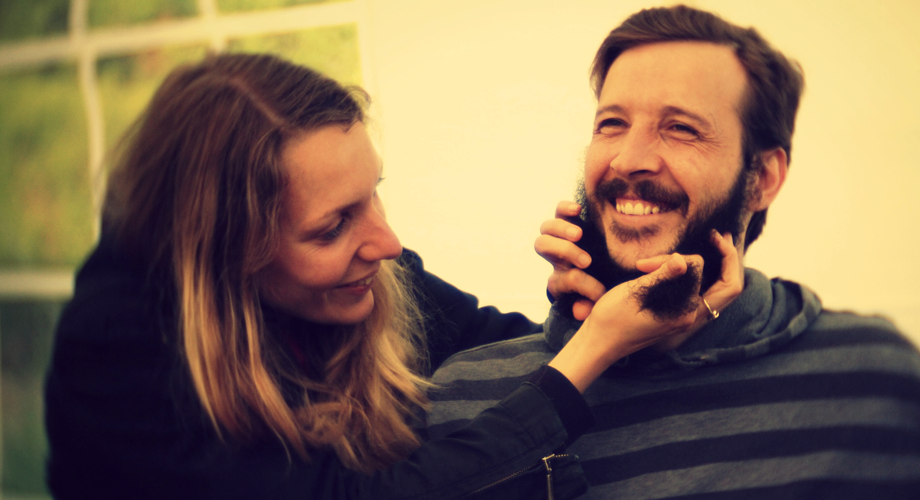Happiness: There's something about the Danish
Andrew Oswald and Eugenio Proto spoke to Nichola Howell as part of the What Makes Us Happy series, following conversations with Sarah Stewart-Brown, Claire Haworth and Libby Burton.

 Professor Andrew Oswald and Associate Professor Eugenio Proto, economists at the University of Warwick, have been looking at that famous puzzle in social science: why do some nations report such high levels of happiness? They spoke to Nichola Howell about the unexpected results of their research.
Professor Andrew Oswald and Associate Professor Eugenio Proto, economists at the University of Warwick, have been looking at that famous puzzle in social science: why do some nations report such high levels of happiness? They spoke to Nichola Howell about the unexpected results of their research.
Q. So, where did the inspiration for the research spring from?
Andrew Oswald: We are both interested in research into human happiness since it’s become the key to shaping policy on wellbeing in the public sphere. Governments all over the world are concerned with measuring and improving it. However, the international differences in wellbeing remained unexplained and we wanted to explore this. It’s simply an interesting subject.
Q. Could you give some examples of those international differences?
Andrew: Well, the Danes and the Dutch traditionally describe themselves as really happy. They routinely rank above the UK and the US in terms of happiness and life satisfaction. But other countries with similarly high-GDPs, like France and Italy, typically report low levels of happiness and wellbeing. We wanted to discover why this was the case.
Q. And how was the research conducted?
Eugenio Proto: Using three kinds of evidence. We used quality of life polls to measure genetic distancing from Denmark, studies in gene mutation to understand international mental wellbeing, and wellbeing reports to measure happiness across the generations.
Andrew: We considered an approach we originally found implausible. The usual measurements that define wellbeing are things like GDP figures, welfare state provisions and government, but we looked into the genetic side of the debate, and were rewarded with some really interesting results.
Q. So how did the international polls shape the investigation?
Eugenio: We used data on 131 countries from a number of international surveys including the Gallup World Poll, World Value Survey and the European Quality of Life Surveys. From these we were able to link cross-national data on genetic distance and wellbeing. The results were surprising; we found that the greater a nation’s genetic distance from Denmark, the lower the reported wellbeing of that nation. Of course, it could be argued that the high life-satisfaction level observed in Nordic countries is due predominantly to the generosity of their welfare states.
We tried our best, given the current data availability, to adjust for these and other influences so as not to skew the results. Happy and ‘thriving’ Netherlands and Sweden, perhaps unsurprisingly given their geographical proximity, had the closest genetic similarity to Denmark. Particularly unhappy ‘struggling’ countries included nations such as Ghana and Madagascar; these have the least genetic similarity to Denmark.
Q. And what did you conclude from the genetic research?
Andrew: For our second piece of research we looked at some existing studies suggesting an association between mental wellbeing and a mutation of the gene that influences the uptake of serotonin. We looked at existing international random-sample surveys which suggested that the long and short variants of this gene are correlated with different probabilities of clinical depression, although this link is still highly debated.
The short version has been associated with higher scores on neuroticism and lower life satisfaction. Intriguingly, among the 30 nations included in the study, it is Denmark and the Netherlands that appear to have the lowest percentage of people with this short version.
Q. You also looked at generational measures of wellbeing. How did this work out?
Eugenio: We looked at whether the link between genetics and happiness also held true across generations, continents and the Atlantic Ocean. The evidence came from a report into the wellbeing of Americans, from which we looked at the part of the world their ancestors had come from. For example, for Americans who reported family origins in Italy, we created an independent variable derived from the happiness level of current Italian-Americans. Of course, we weren’t arguing that happy Italian-Americans directly cause the happiness of today’s Italy! But the evidence revealed that there is an unexplained positive correlation between the happiness today of some nations and the observed happiness of Americans whose ancestors came from these nations.
Q. So what were the overall results of the research?
Eugenio: Contrary to our own assumptions when we began the project, the findings of the research suggested that certain nationalities could be more genetically inclined toward happiness. We found that the closer a nation is to the ‘holy grail’ of Danish genetic makeup, the happier that country is. It seems there are reasons to believe that genetic patterns may help researchers to understand international wellbeing levels.
Q. What’s the next step, can the research be taken any further?
Andrew: Well, more research in this area is needed and economists and social scientists may need to pay greater heed to the role of genetic variation across national populations. An important avenue for future research would be to check that the results can be replicated in other ways, perhaps across regions within nations.
Video courtesy of Reuters Video
More articles in this series:
Can we measure happiness? Sarah Stewart Brown, Warwick Medical School
Is happiness in our genes? Claire Haworth, Department of Psychology
Is happiness homemade? Libby Burton, WMS, School of Engineering
Image:
</